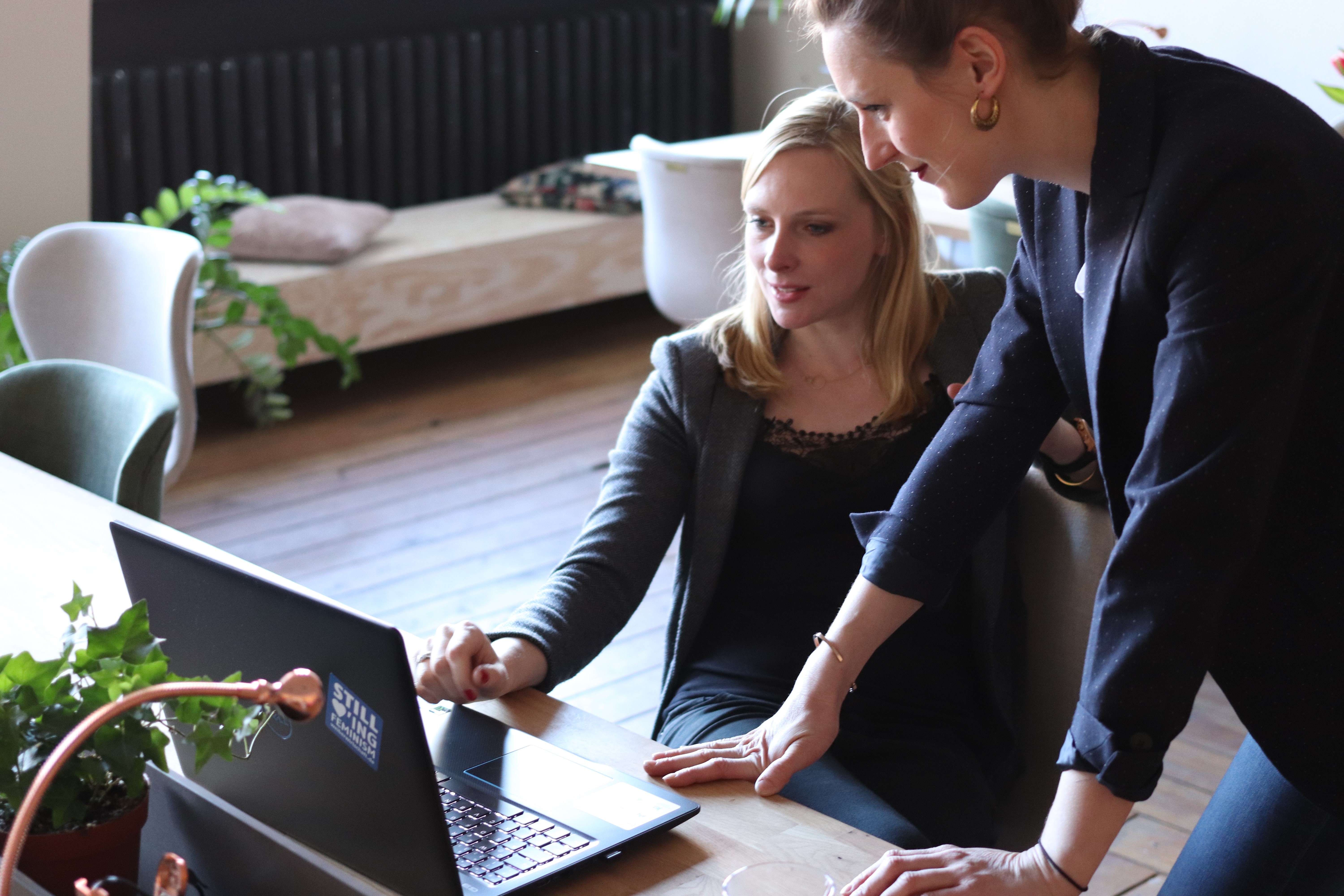By José Manuel Blanco
Originally Published by MIT Technology Review in Spanish
The global head of Training, Development and Talent at Banco Santander, Elisabetta Galli, is the best example of how new technologies are already shaping all areas of a business. Her aim is to ensure that the transformation of her department translates into a change in corporate culture that adapts to the new market reality
Identify the daily or future needs of workers. This was the objective of the Strategic Workforce Planning initiative that Banco Santander launched in 2018 and which has been reflected in the Dojo learning platform. But this is not the only initiative with which the bank is combining human resources with technology: it also has a project to integrate artificial intelligence (AI) in the pre-selection of future employees, as explained by the global head of Training, Development and Talent at Banco Santander, Elisabetta Galli, who says she has already booked several courses at Dojo.
New technologies are penetrating all areas of a company. How are they impacting on human resources departments?
Technology greatly facilitates connections, dynamics... In our case, we are applying them in two areas. One is recruitment, where we are introducing artificial intelligence. And the biggest part, the most important part, is the implementation of the Dojo program, which involves a radical transformation of the entire operational model of learning and development.
It is a unique learning experience platform at the moment, which gives us the possibility to put our strategy into action: to implement a new skills model at a global level in Santander. In January we launched the minimum viable product and our objective is for Banco Santander's 200,000 employees globally to be involved by 2021.
How are they preparing employees to deal with this kind of evolution in their daily processes?
We are defining and implementing a very important, very deep, and also broad global change management plan. It's not just about implementing a new concept or process: for the first time, we are asking employees to take full responsibility for their own development and training. This implies a change of mentality, because in the traditional world training and development have always been passive processes, and we want to move to an almost completely active dimension.
When it comes to recruitment, there are already companies that use innovations such as gambling and virtual interviews. What is Santander doing to join this transformation?
We have a project to integrate artificial intelligence into pre-selection. I'm sure that non-verbal face reading and neuro-linguistic programming can help detect which people are more or less aligned with your values or have the skills you need, but I want to see data. We are having conversations with companies that use artificial intelligence to analyze verbal and nonverbal language and deliver predictive data. I have a good feeling about it. Let's see the results.
Do you think that training through technological tools is more or less effective than classroom training? Do you think that it allows you to generate experiences and results in learning that perhaps classroom training does not?
Yes to both questions. I think that classroom training is not more or less effective: it is effective only when it is necessary. I give you an example. The most important and shortest part of the training itineraries is the one that you can learn in a natural, digital, asynchronous way, whenever you want. But at some point you will have to do something practical, have an experience. It is clear that you will have to go through a digital training itinerary, but in the end, to have the certification, you will have to act, to participate in a project and guide it. This cannot be given to you by the digital.
The point is not to do [training] in person when we have other options. Putting people in a room for four days and having a speaking teacher will continue to be done, but only when necessary and functional for learning or experience.
I also think that formal learning is very important because it teaches you to think in a structured way. This can be given by more traditional training. But what makes the difference is the flexibility, what I am able to do in the moment, in real time, the extent to which I can apply my knowledge. This is something that universities are trying to achieve. They have all set themselves in motion, and I think it is going to change a lot the traditional way of creating knowledge and doing training. Digital companies, like Google, don't care so much about your college degree as what you do and your attitude.
Do you think this advantage will allow human resources departments to spend more time on people, talent and culture, and less on administrative tasks?
Absolutely. We're already seeing this with the implementation of [the employee data management tool] Workday: the manager and the employee directly manage the tasks, interacting with the system. This will also happen with Dojo: employees and managers will be able to interact with the platform and get all the information naturally and autonomously, in real time.
All this will change the way we work and interact in the field of learning and development. We will need fewer pure administrative people and many more strategic and internal consulting profiles.
What benefits do employees get when these types of technologies are introduced in their daily lives?
The benefit of owning their time. Time is the greatest value. Being able to learn at any time, when I am in the subway, when I have a half hour break and I am interested in seeing a subject.
For my "learning queue" at Dojo, I have selected topics that I consider very important for Banco Santander. Dojo gives you the possibility to create that queue: it already knows that I want to learn things about agile, blockchain and data analysis, so it will propose me everything we have about that in a natural way so that I can learn. That will give me two very important things. First, I'm going to develop my profile and learn what I'm interested in. Second, I will learn things relevant to the bank.

And how do the workers react to those benefits?
There are different categories of employees. One is younger people, who are digital by nature, but also older people who are super-digital. Another group are those who are sceptical, but understand very well that this is the future, that they can't stop it and that they have to get on and learn. The third group is the people who don't want to know about this and push back. I am very interested in this group because I believe that we can do a lot to change their mentality and to understand the advantages of the new ways of working and learning.
In general, what I see is that the employees are very interested, they are receiving this transformation in a very positive way. Also, I see that, in the older generations, who are a very good social sample, there is a good percentage interested that considers that this is the right direction.
I'm not a digital native, but I believe the future cannot be stopped, so the only smart thing to do is to look, listen, learn and say, "I want it and I'll incorporate it. That's the attitude. For the first time I have engineers on my team. Never in my professional history have I needed to hire them, now I do. I'm learning a lot from them. Now that I understand so much more I see how these new skills are making a difference.
How do you see the future of human resources?
I see it completely data-driven. Data, numbers and pure research will be used to make decisions. This is totally new in human resources. In fact, Dojo was born after the first analysis we did, when we saw that we needed to do massive upskilling and reskilling of 70% of our staff.
What kind of data is key to these transformation or decision-making processes?
You must have real data in real time about the dynamics that occur in your template. And you have to understand it through analysis. I give you another example with Dojo: if I see that 50% of my staff starts looking for a completely new topic, I have to understand why. And, if I don't have any content in this topic, I have to create it quickly.
Do you think there is a need for human resources that technology has not yet solved?
I would love to have a system that would help me visualize the data from the real-time analysis of all the market trends: external, internal, disruptive events... That work takes time, so if I could have a technology that would compare and comment on the data for me and in real time, that would be great.
Human resources departments often acquire ready-made technologies - can you imagine a department with its own R&D center or its own technology lab?
Absolutely. Dojo is one example. We have adopted a product that only IBM used and we are customising it. We are working in a joint venture environment, we are learning and inventing things together. That's the future.
I'm quite supportive of buying ready-made products, because creating something inside when you don't have the knowledge or the core of your business is a headache. But the future is to have an innovation lab where you can partner with other technology companies and respond to a new need.
What advice would you give about transformation and adopting new challenges to other peers in your situation?
That you have to have a lot of courage, resilience, a very clear vision of where you want to go and pursue it with all your strength. Take people behind you, teach them the direction and never stop transmitting this vision, enthusiasm and energy.
Everything we have talked about can only work if you start: you cannot do anything if you do not provoke a deep cultural change, a wave of change. And the wave of change can happen in various ways, but I believe that top management has to set an example and make room for islands of change in the company.
Can you highlight any technological project of Banco Santander for the financial environment?
In the branches, we are testing robots that interact with the customers, and I think they can work very well. In addition, we are working hard and very successfully on the digitalization of our services to keep up with market changes and new customer needs. I think all the strategic initiatives to anticipate the future in an optimal way for our internal and external customers have already been implemented at Santander, and we are doing very well!



